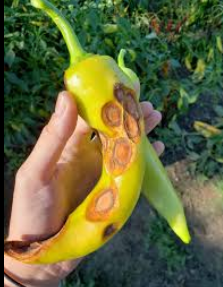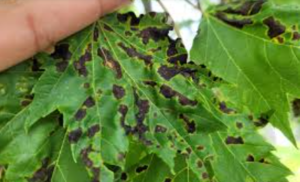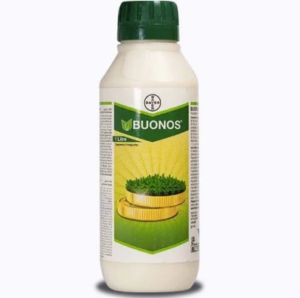Hello everyone, In this article we will know about Anthracnose disease and its important factor like it’s introduction, identification, cause of Anthracnose, precautions and its treatment.
Introduction of Anthracnose Disease

Anthracnose is a plant disease caused by a group of fungal pathogens. Similarly from the genera Colletotrichum and Gloeosporium.
It can affect various plant parts, including leaves, stems and fruit leading to symptoms such as dark, sunken lesions and premature leaf drop.
Infected plant often exhibit reduce growth and yield and in severe causes can die. The disease often thrive in warm, wet conditions, making it particularly problematic in humid climates.
Read more:
Identification of Anthracnose Disease

- These fungal disease affecting a wide range of plants characterized by Look for dark, water soaked spots that can expand and become sunken.
- On the leaves, these spots often have a distinct border and may turn yellow. Fruit and stem lesions can be darken.
- It affect various plant, including trees, vegetable and ornamental plants. Different species of the fungus to affect specific plants.
- The disease thrive in warm, wet conditions, so prolonged rainfall or high humidity can increase the risk of infection. The fungal spread via spores carried by water, wind or tools and equipment.
Causes of Anthracnose Disease
- This is caused by several species of fungi including the most common cause colletotrichum spp, affecting various plants.
- Gloeosporium spp. often target fruit and vegetables. Glomerella cingulata known for causing Anthracnose in some crops.
- The fungi produce spore that are dispersed by rain, wind and contamination tools or equipment.
The spores land on plant tissue and germination under favorable conditions. They enter through natural opening. - The fungal colonize the plant tissue, causing the characteristic dark, sunken lesions. The pathogens produce enzyme, that break down plant cell, leading to tissue damage and death.
- The fungus produce new spore on the infected tissue, which are then released infect other parts of the plant or new plant.
Precautions of Anthracnose Disease
- Proper spacing to ensure good air circulation, which helps reduce humidity around plant.
Remove and dispose of infected plant parts to minimize sources of infection. - Clean tools and equipment regularly to avoid spreading spore between plants.
- Use drip irrigation or water at the base plant to minimize leaf wetness which encourages fungal growth.
- Water plant early in the day to allow following to dry before evening reducing moisture the promotes fungal growth.
- Maintain good soil health through proper fertilization and organic matter.
- Use plant varieties that can resistant or tolerant to Anthracnose.
- Apply fungicides according to recommendation for your specific plant and local condition. Use fungicide as directed and rotate different type to prevent resistance.
- Clean fallen leaves and plant debris where spore can over winter and spread. Minimize plant stress by providing adequate nutrient water and avoid physically damage.
Read more:
-
Fusarium Wilt Disease: Identification, Cause, Precaution And Treatment
-
Smut Disease: Identification, Cause, Precaution And Treatment
Treatment of Anthracnose Disease

- It is a fungal disease that affects a variety of plants including fruit, vegetables and ornamental plants.
Treatment Depend on the type of plants and severity of the infection. - Infected plant are clear and depose of infected leave, root and stem, to reduce Fungal spores that can spread the disease. Space plants adequately and avoid overcrowding.
- Good airflow around the plant help to reduce humidity which inhibit the fungal growth.
- Water plant at the base to keep foliage dry and minimize fungal spread.
- Avoid planting the same species or family of the plant in the same location year after year.
- Rotate crops to reduce the build-up of fungal spores in the soil.
- Use fungicides that are effective against Anthracnose. Include product containing chlorothalonil, copper compound or mancozeb.
- Always choose a fungicides specific to the type of plant affected.
- Application timing of apply fungicides early in the disease cycle before symptom are server. Ensure through coverage of the plant surface as the fungus can infect both upper and lower leaf surface.
- To use plant varieties that are resistant or tolerant to Anthracnose. Resistant variety are less likely to be affected and can significantly reduce the need for chemical treatments.
- Regular clean and disinfect garden tools and equipment to present transferring fungal spore between plant.
- Avoid working in the garden plant are wet, as this can spread spore. Regular monitoring and promote action are essential for managing and preventing Anthracnose.
Conclusion
Anthracnose is a plant disease caused by a groups of the fungal pathogens
that affects a wide range of plants symptoms like leaf spots, lesions, and fruit rot.
Managing and effectively required a combination strategies including using resistant plant varieties, maintaining good sanitation practice and apply fungicides when necessary.
Timely intervention and preventive measure are crucial to minimizing the impact of anthracnose on agricultural and ornamental plants health.
FAQ
1. What cause Anthracnose?
Anthracnose is a plant disease caused by various of fungal disease from the genera collectotrichum, glomerella and elsinoe. The disease type manifest as dark, sunken lesions of leave, stems and fruit which can lead to significant damage if not managed properly.
2. What are another name of Anthracnose?
Another common name for Anthracnose is ”leaf spots” although this term can also refer to various other fungal and bacterial disease affecting plant leave. The specific name can vary depending on the plant species affected and the particular fungal pathogen involved.
3. Is Anthracnose a fungal or bacteria disease?
These are fungal disease. It is caused by various fungal. These fungi infect plants through wound or natural opening, dark, leading sunken lesions of leave, stems and fruits.
4. What is the disease control of Anthracnose?
The disease control by treatment effectively involve on combination of cultural practices, chemical control and sometime biological.
5. What is the best way to treat Anthracnose?
- The best treatment of Anthracnose
- Remove infected plant material and improve air circulation.
- Apply appropriate fungicides as per label instructions .
- Water plant at the base to keep foliage dry.
- Use resistant plant varieties available.
6. What are general symptoms of Anthracnose ?
The dark , sunken lesions of leave, stems and fruit. Angular or irregular spots with a dark center and lighter edge. Premature leaf drop and dieback of shoot or branches.
